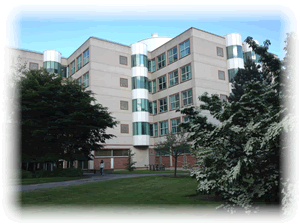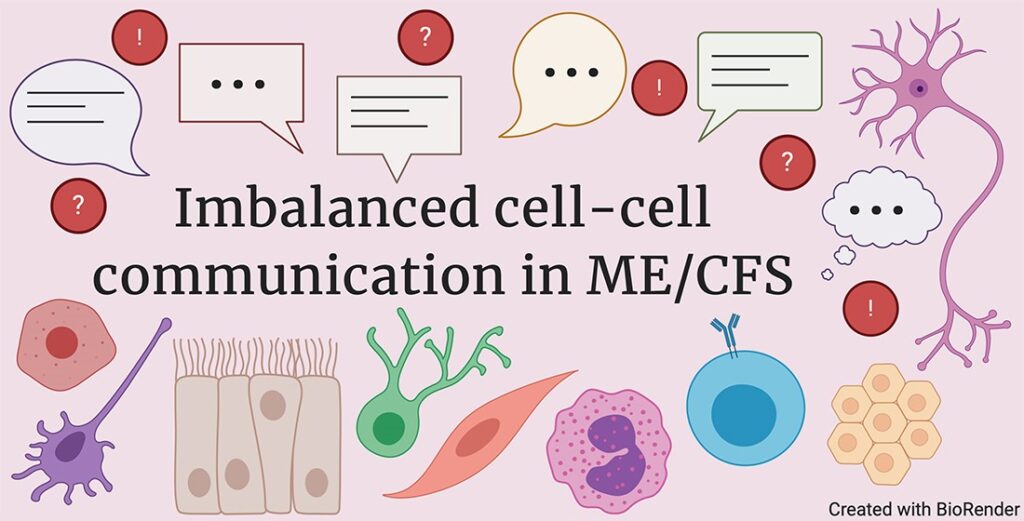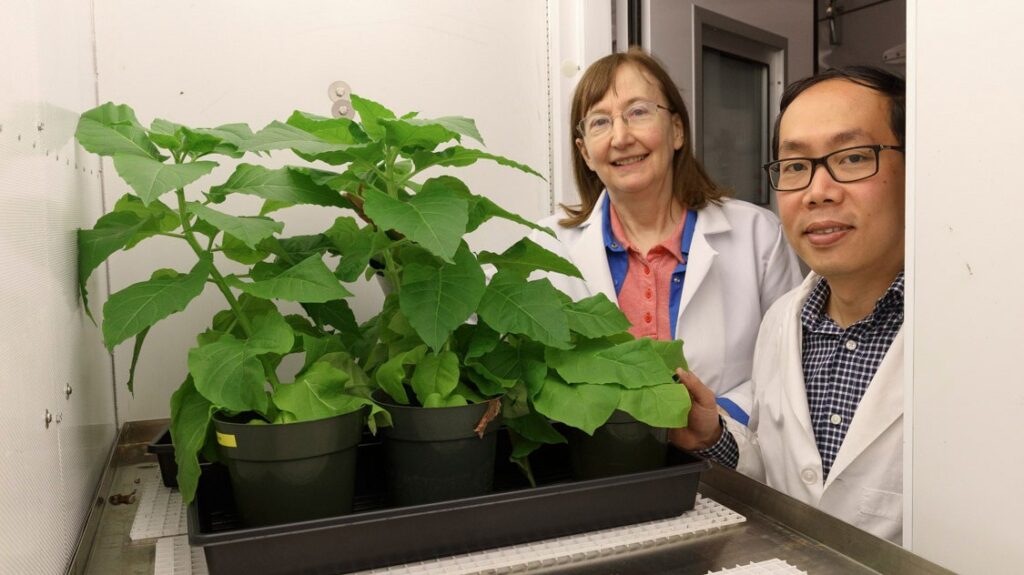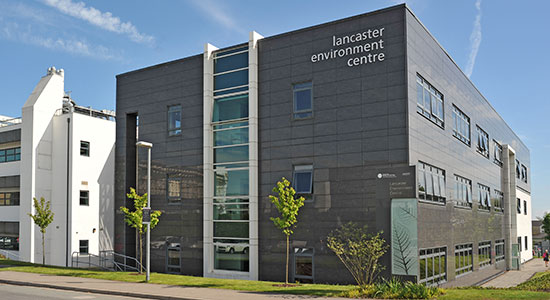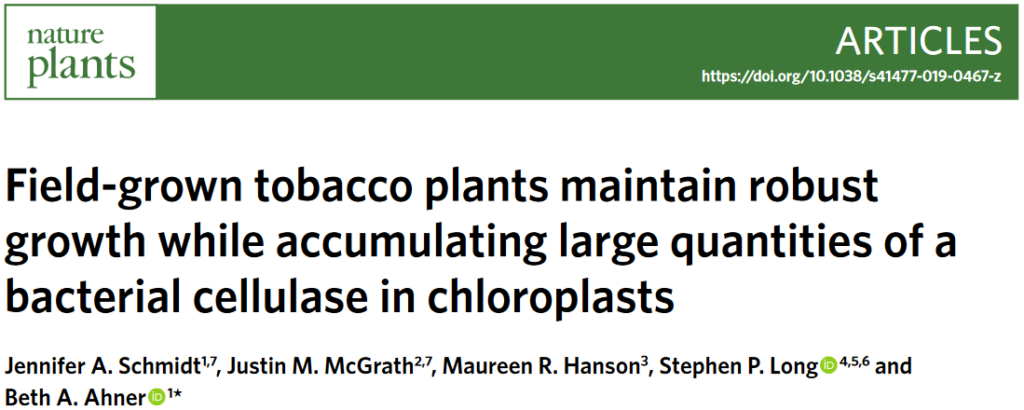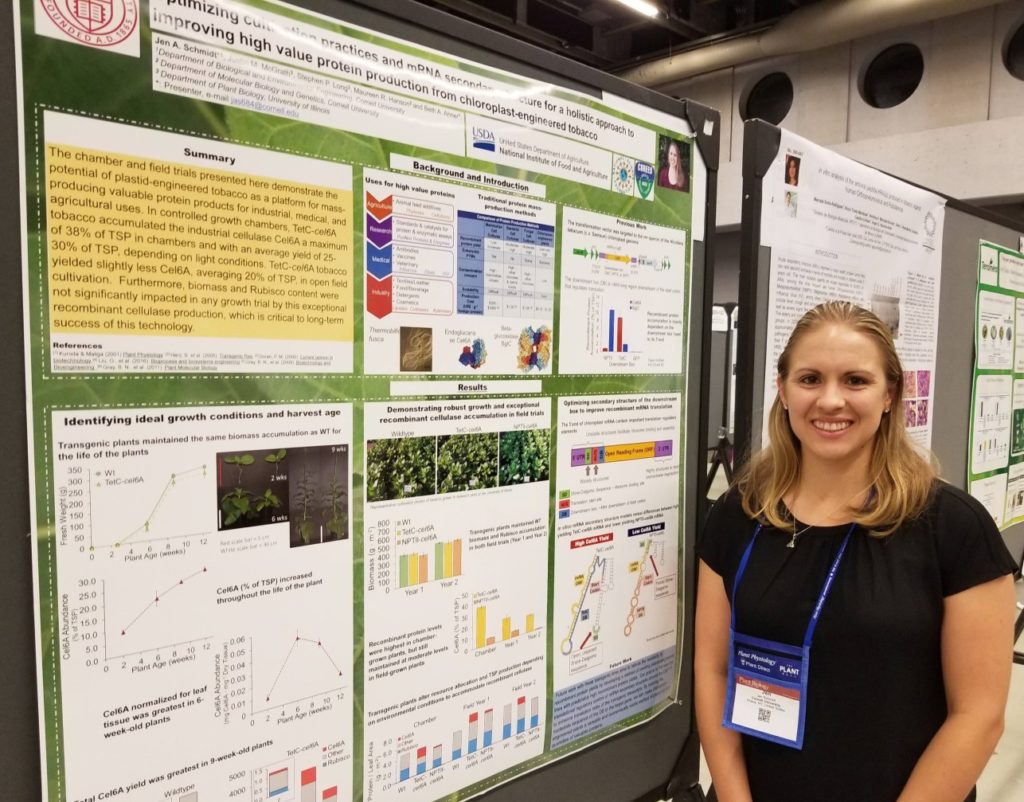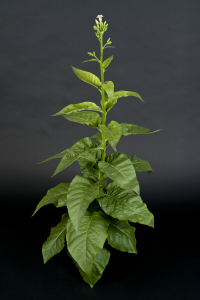An April 2022 publication in Science Advances, describes some recent work in the lab to improve photosynthesis. The paper describes the evolution of Rubisco, an important yet inefficient carbon-fixing enzyme, using computational methods. These computational methods led to the prediction of ancestral Rubisco variants that were tested in E. coli under different CO2 conditions. Enzymes with higher catalytic efficiency were identified. Overall, the results highlight ways to help plants adapt to anthropogenic climate change. Check out a Cornell CALS news article for a longer description of the work.
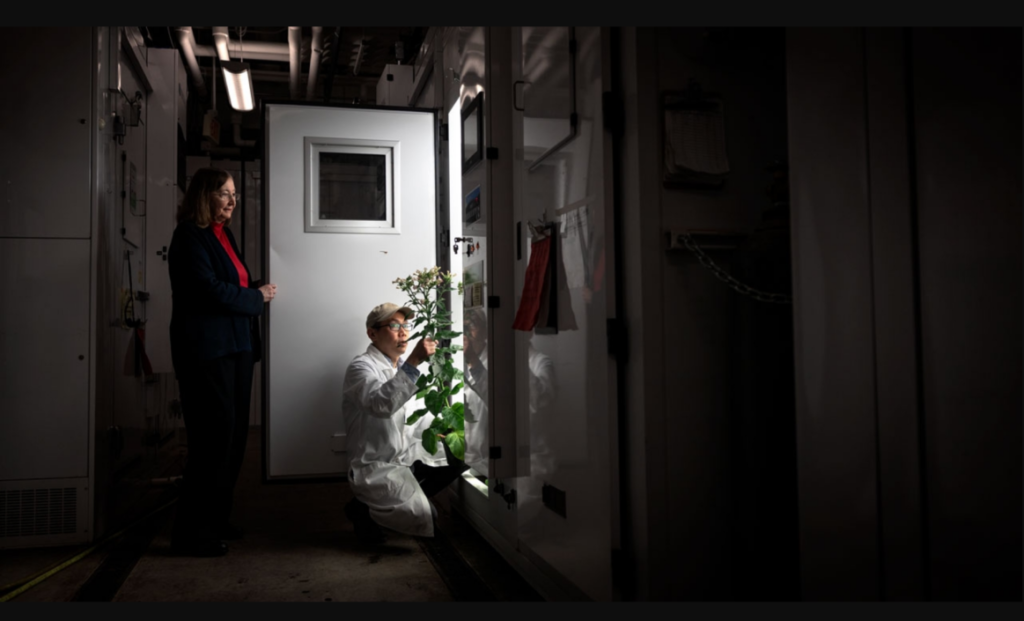
Photo credit: Cornell University
